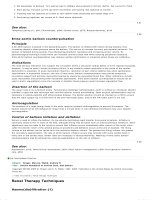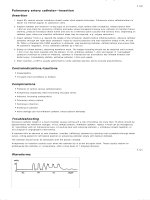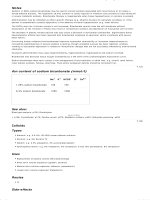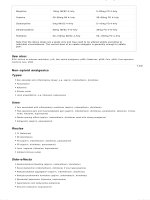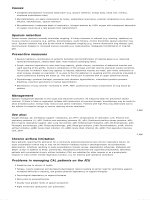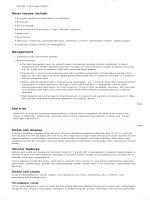- Trang chủ >>
- Y - Dược >>
- Ngoại khoa
oxford handook of critical care 3rd ed
Bạn đang xem bản rút gọn của tài liệu. Xem và tải ngay bản đầy đủ của tài liệu tại đây (2.41 MB, 700 trang )
OXFORD MEDICAL PUBLICATIONS
Oxford Handbook of
Critical Care
THIRD EDITION
Published and forthcoming Oxford Handbooks
Oxford Handbook of Acute Medicine 2/e
Oxford Handbook of Anaesthesia 2/e
Oxford Handbook of Applied Dental Sciences
Oxford Handbook of Cardiology
Oxford Handbook of Clinical and Laboratory Investigation 2/e
Oxford Handbook of Clinical Dentistry 4/e
Oxford Handbook of Clinical Diagnosis 2/e
Oxford Handbook of Clinical Examination and Practical Skills
Oxford Handbook of Clinical Haematology 3/e
Oxford Handbook of Clinical Immunology and Allergy 2/e
Oxford Handbook of Clinical Medicine – Mini Edition 7/e
Oxford Handbook of Clinical Medicine 7/e
Oxford Handbook of Clinical Pharmacy
Oxford Handbook of Clinical Rehabilitation 2/e
Oxford Handbook of Clinical Specialties 8/e
Oxford Handbook of Clinical Surgery 3/e
Oxford Handbook of Complementary Medicine
Oxford Handbook of Critical Care 3/e
Oxford Handbook of Dental Patient Care 2/e
Oxford Handbook of Dialysis 3/e
Oxford Handbook of Emergency Medicine 3/e
Oxford Handbook of Endocrinology and Diabetes 2/e
Oxford Handbook of ENT and Head and Neck Surgery
Oxford Handbook of Expedition and Wilderness Medicine
Oxford Handbook for the Foundation Programme 2/e
Oxford Handbook of Gastroenterology and Hepatology
Oxford Handbook of General Practice 3/e
Oxford Handbook of Genitourinary Medicine, HIV and AIDS
Oxford Handbook of Geriatric Medicine
Oxford Handbook of Infectious Diseases and Microbiology
Oxford Handbook of Key Clinical Evidence
Oxford Handbook of Medical Sciences
Oxford Handbook of Nephrology and Hypertension
Oxford Handbook of Neurology
Oxford Handbook of Nutrition and Dietetics
Oxford Handbook of Obstetrics and Gynaecology 2/e
Oxford Handbook of Occupational Health
Oxford Handbook of Oncology 2/e
Oxford Handbook of Ophthalmology
Oxford Handbook of Paediatrics
Oxford Handbook of Palliative Care 2/e
Oxford Handbook of Practical Drug Therapy
Oxford Handbook of Pre-Hospital Care
Oxford Handbook of Psychiatry 2/e
Oxford Handbook of Public Health Practice 2/e
Oxford Handbook of Reproductive Medicine and Family Planning
Oxford Handbook of Respiratory Medicine 2/e
Oxford Handbook of Rheumatology 2/e
Oxford Handbook of Sport and Exercise Medicine
Oxford Handbook of Tropical Medicine 3/e
Oxford Handbook of Urology 2/e
Oxford Handbook of
Critical Care
THIRD EDITION
Mervyn Singer
Professor of Intensive Care Medicine;
Director, Bloomsbury Institute of Intensive Care Medicine,
University College London
London, UK
Andrew R. Webb
Medical Director and Consultant Physician,
Department of Intensive Care,
University College London Hospitals,
London, UK
1
1
Great Clarendon Street, Oxford OX2 6DP
Oxford University Press is a department of the University of Oxford.
It furthers the University’s objective of excellence in research, scholarship,
and education by publishing worldwide in
Oxford New York
Auckland Cape Town Dar es Salaam Hong Kong Karachi
Kuala Lumpur Madrid Melbourne Mexico City Nairobi
New Delhi Shanghai Taipei Toronto
With offi ces in
Argentina Austria Brazil Chile Czech Republic France Greece
Guatemala Hungary Italy Japan Poland Portugal Singapore
South Korea Switzerland Thailand Turkey Ukraine Vietnam
Oxford is a registered trade mark of Oxford University Press
in the UK and in certain other countries
Published in the United States
by Oxford University Press Inc., New York
© Oxford University Press, 2009
The moral rights of the authors have been asserted
Database right Oxford University Press (maker)
First edition published 1997
Second edition published 2005
Third edition published 2009
All rights reserved. No part of this publication may be reproduced,
stored in a retrieval system, or transmitted, in any form or by any means,
without the prior permission in writing of Oxford University Press,
or as expressly permitted by law, or under terms agreed with the appropriate
reprographics rights organization. Enquiries concerning reproduction
outside the scope of the above should be sent to the Rights Department,
Oxford University Press, at the address above
You must not circulate this book in any other binding or cover
and you must impose this same condition on any acquirer
British Library Cataloguing in Publication Data
Data available
Library of Congress Cataloging-in-Publication-Data
Data available
Typeset by Cepha Imaging Private Ltd., Bangalore, India
Printed in Italy
on acid-free paper by
L.E.G.O. S.p.A.—Lavis TN
ISBN 978–0–19–923533–9
10 9 8 7 6 5 4 3 2 1
Oxford University Press makes no representation, express or implied, that the drug
dosages in this book are correct. Readers must therefore always check the product
information and clinical procedures with the most up-to-date published product
information and data sheets provided by the manufacturers and the most recent
codes of conduct and safety regulations. The authors and publishers do not accept
responsibility or legal liability for any errors in the text or for the misuse or misap-
plication of material in this work.
v
Foreword vii
Preface to the previous editions ix
Preface to this edition x
Abbreviations xi
Detailed contents xxi
1. Critical care organisation and management
1
2. Respiratory therapy techniques
37
3. Cardiovascular therapy techniques
93
4. Renal therapy techniques
107
5. Gastrointestinal therapy techniques
117
6. Nutrition and metabolic therapy
125
7. Wound and pressure area management
135
8. Respiratory monitoring
143
9. Cardiovascular monitoring
161
10. Neurological monitoring
199
11. Laboratory monitoring
209
12. Miscellaneous monitoring
231
13. Fluids
241
14. Respiratory drugs
253
15. Cardiovascular drugs
263
16. Renal drugs
279
17. Gastrointestinal drugs
285
18. Neurological drugs
301
19. Haematological drugs
317
20. Miscellaneous drugs
325
21. Resuscitation
337
22. Respiratory disorders
345
Contents
vi
23. Cardiovascular disorders
379
24. Renal disorders
397
25. Gastrointestinal disorders
405
26. Hepatic disorders
427
27. Neurological disorders
437
28. Haematological disorders
467
29. Metabolic disorders
481
30. Poisoning
519
31. Infection and infl ammation
543
32. Trauma and burns
581
33. Physical disorders
599
34. Pain and post-operative critical care
617
35. Oncological critical care
623
36. Obstetric emergencies
633
37. Transport of the critically ill
643
38. Death and the dying patient
651
Index 659
CONTENTS
vii
Foreword
I am delighted, for several reasons, to write the foreword for the third
edition of this handbook of critical care medicine. Firstly, both authors
were former colleagues whose careers have blossomed very considerably
since we all worked together. Secondly, the fact that three editions have
been produced in the past 12 years with total sales of 30,000 refl ects the
rapidly emerging importance of intensive care as a specialty in its own right.
Thirdly, the fact that about 20% of the material in this current edition is new
refl ects how quickly intensive care is changing.
Although this book is designed to fi t the pocket it contains an enormous
amount of clearly presented and important information. It is essential
reading for nurses and doctors of all grades who are involved in looking
after the critically ill.
Many acutely ill patients are still being cared for in general wards
without ever being admitted to an intensive care unit. The popularity of
the two previous editions of this book suggests it is being read by staff
working in these non-critical care areas and I do believe this will assist
them considerably in improving patient care.
The layout of the book lends itself extremely well to an electronic
format, a move which I thoroughly endorse. I wish the book the success it
thoroughly deserves.
David Bennett
Visiting Professor of Intensive Care Medicine
King’s College London
This page intentionally left blank
ix
Preface to the previous
editions
Of all the medical specialities, few, if any, are as exacting and complex as
critical care medicine. The required knowledge of physiology, pathophysi-
ology, biochemistry, technology, and pharmacology; the unpredictability;
the need to act and react decisively; the ability to communicate clearly
with colleagues, patients, and relatives, often in stressful situations; the
importance of working cohesively within an expanded team drawn from
different backgrounds; and the regular occurrences of ethical and life-
and-death dilemmas, all place heavy demands on the intensive care staff
member.
This book does not aim to be a panacea; many areas of uncertainty
in diagnosis and management remain. However, current best practice (at
least as practised by us!) is described in succinct, concise, clinically orien-
tated sections, covering therapeutic and monitoring, drugs and fl uids, spe-
cifi c organ system disorders and complications, and general management
philosophies. Ample space is provided to append or amend sections to
suit your particular practice.
It will hopefully serve the consultant, junior doctor, nurse, or other para-
medical staff as a reference book, aide memoire, and handy pocket book,
providing rationales and solutions to most of the problems encountered.
Buoyed by the positive feedback we received after publication of the
1
st
edition of this book, we endeavoured to maintain the style and, where
appropriate, changed the substance for the 2
nd
edition. This involved the
addition of some new sections to describe recent innovations in either
thought and/or process. However, many of the existing chapters were
updated to refl ect the rapid rate of change in ICU management that has
occurred since we last put pen to paper.
Mervyn Singer
Andrew R. Webb
1996/2004
x
Preface to this edition
This new edition embraces the many recent developments occurring in
critical care medicine, in particular the burgeoning number of randomised,
multicentre trials and the increasing understanding of underlying basic
science mechanisms. While not necessarily providing defi nitive answers,
these studies have contributed signifi cantly to our knowledge base and
highlighted both the complexity of critical illness and the variation in indi-
vidual response. They frequently demonstrate the need to recognise and
treat deterioration promptly, and fl ag up the many detrimental effects
of our current therapies and strategies. A balance needs to be sought
between under- and over-treatment—be it for fl uids, sedatives, antibiotics,
pressors, ventilation, etc., and we will no doubt continue to refi ne this
further in coming years, particularly with enhancements in monitoring and
diagnostics.
These studies further demonstrate the ‘one size fi ts all’ paradigm on
which traditional categorisation of patients is based, e.g. those with sepsis
is, perhaps, overly simplistic. We should follow local, national, and interna-
tional guidelines on patient management, yet still retain the fl exibility of
thought and action to diverge should an individual patient not follow the
rules. We have thus provided a framework upon which a reasonable and
rational practice can be based; this is clearly not the fi nal word. We expect
both healthy debate and continuing evolution!
In line with advances in critical care, other specialities have new treat-
ments and management regimens for specifi c conditions that often bring
affected patients to our attention. We gratefully acknowledge the input
and advice received from Sheila Adam, Emma Morris, Alastair O’Brien,
Marie Scully, Penny Shaw, and Simon Woldman.
Mervyn Singer
Andrew R. Webb
2009
xi
A&E Accident and emergency
A–aDO
2
Alveolar–arterial oxygen difference
ABE Arterial base excess
ACE Angiotensin converting enzyme
ACMV Assist control mechanical ventilation
ACT Activated clotting time
ACTH Adrenocorticotropic hormone
ADH Antidiuretic hormone
AGE Arterial gas embolism
AIDS Acquired immunodefi ciency syndrome
AIS Abbreviated injury score
ALI Acute lung injury
ALT Alanine aminotransferase
ANCA Anti-nuclear cytoplasmic antibodies
AP Anteroposterior
APACHE Acute physiology and chronic health evaluation
APTT Activated partial thromboplastin time
ARDS Acute respiratory distress syndrome
ASD Atrio-septal defect
AST Aspartate aminotransferase
ATP Adenosine triphosphate
AV Aortic valve
bd Bis die (twice daily)
BiPAP Bilevel positive airways pressure
BIS Bispectral index
BNP Brain natriuretic peptide
BOOP Bronchiolitis obliterans with organising pneumonia
bpm Beats per minute
Ca
2+
Calcium
CABG Coronary artery bypass grafting
CaCl
2
Calcium chloride
Cal Calorie
CAL Chronic airfl ow limitation
CAM Confusion assessment method
cAMP Cyclic adenosine monophosphate
c-ANCA Core anti-neutrophil cytoplasmic antibodies
Abbreviations
xii
DETAILED CONTENTS
CBF Cerebral blood fl ow
CBV Cerebral blood volume
CcO
2
End-capillary oxygen content
CD Cluster of differentiation
CDI Cranial diabetes insipidus
CFM Cerebral function monitor
cGMP Cyclic guanosine monophosphate
CJD Creutzfeldt–Jacob disease
CI Cardiac index
CK Creatine kinase
Cl
–
Chloride
CLL Chronic lymphocytic leukaemia
cm Centimetre
cmH
2
O Centimetres of water
CMRO
2
Cerebral metabolic rate for oxygen
CMV Controlled mandatory ventilation
CMV Cytomegalovirus
CNS Central nervous system
CO Carbon monoxide
CO
2
Carbon dioxide
COHb Carboxyhaemoglobin
COP Colloid osmotic pressure
CPAP Continuous positive airways pressure
CPK Creatine phosphokinase
CPP Cerebral perfusion pressure
CPR Cardiopulmonary resuscitation
CRP C-reactive protein
CSF Cerebrospinal fl uid
CT Computerised tomography
CVA Cerebrovascular accident
CVP Central venous pressure
CVVH Continuous veno-venous haemofi ltration
CVVHD Continuous veno-venous haemodiafi ltration
CXR Chest X-ray
d Day
D Dalton
DA Dopamine
DDAVP 1-deamino-8-D-arginine vasopressin
DEAFF Detection of early antigen fl uorescent foci
deoxyHb Deoxyhaemoglobin
ABBREVIATIONS
xiii
DETAILED CONTENTS
DIC Disseminated intravascular coagulation
dL Decilitre
DNA Deoxyribonucleic acid
DO
2
Oxygen delivery
DPG Diphosphoglycerate
DS Degree of substitution
DVT Deep vein thrombosis
dyn.s Dyne second
ECCO
2
R Extracorporeal carbon dioxide removal
ECF Extracellular fl uid
ECG Electrocardiogram
ECMO Extracorporeal membrane oxygenation
EEG Electroencephalogram
EMG Electromyogram
ENT Ear, nose and throat
EPAP Expiratory positive airway pressure
ERCP Endoscopic retrograde pancreatography
ESBL Extended spectrum beta-lactamase
ET Endotracheal
EVLW Extravascular lung water
FADH
2
Flavin adenine dinucleotide-H
2
FDP Fibrin degradation product
FEV
1
Forced expired volume in 1 second
FFP Fresh frozen plasma
FiO
2
Fractional inspired oxygen concentration
fL Femptolitre
Fr French gauge
FRC Functional residual capacity
FTc Corrected fl ow time
FVC Forced vital capacity
g Gram
GBM Glomerular basement membrane
GCS Glasgow coma score
G-CSF Granulocyte-colony stimulating factor
GEDV Global end-diastolic volume
GFR Glomerular fi ltration rate
GI Gastrointestinal
GGT Gamma glutamyl transaminase
GMP Guanosine monophosphate
GTN Glyceryl trinitrate
ABBREVIATIONS
xiv
DETAILED CONTENTS
GVHD Graft versus host disease
h Hour
H
+
Hydrogen ion
Hb Haemoglobin
HCl Hydrochloric acid
HCO
3
–
Bicarbonate
He Helium
HELLP Haemolysis, elevated liver enzymes & low platelets
HFJV High frequency jet ventilation
HFO High frequency oscillation
HITS Heparin-induced thrombocytopaenia syndrome
HIV Human immunodefi ciency virus
HME Head and moisture exchanger
H
2
O Water
hpf High power fi eld
HR Heart rate
Hrly Hourly
HUS Haemolytic uraemic syndrome
Hz Hertz
IABP Intra-aortic blood pressure
ICP Intracranial pressure
id Internal diameter
I:E Inspiratory : expiratory
ICP Intracranial pressure
ICU Intensive care unit
Ig Immunoglobulin
IM Intramuscular
IMV Intermittent mandatory ventilation
INR International normalised ratio
IPAP Inspiratory positive airway pressure
IPPV Intermittent positive pressure ventilation
IRS Immune reconstitution syndrome
IS Inspiratory support
ISS Injury severity score
ITBV Intrathoracic blood volume
ITP Idiopathic thrombocytopaenic purpura
IU International unit
IV Intravenous
K
+
Potassium
KCl Potassium chloride
ABBREVIATIONS
xv
kDa Kilodalton
kg Kilogram
kHz Kilohertz
kIU Kallikrein inhibitor units
kJ Kilojoule
kPa Kilopascal
kU Kilounit
L Litre
LA Left atrium
L-NMMA L-N
G
-monomethyl arginine
LBBB Left bundle branch block
LDH Lactate dehydrogenase
LED Light emitting diode
LFPPV Low frequency positive pressure ventilation
LFT Liver function test
L-NMMA L-N-mono-methyl-arginine
LMW Low molecular weight
LP Lumbar puncture
LVEDP Left ventricular end diastolic pressure
LVF Left ventricular failure
LVOT Left ventricular outfl ow tract
LVSW Left ventricular stroke work
mcg Microgram
μmol Micromole
M,C&S Microscopy, culture & sensitivity
mA Milliamp
MAOI Monoamine oxidase inhibitor
MAP Mean arterial pressure
MARS Molecular Adsorbent Recirculation System
MCA Middle cerebral artery
MCV Mean cellular volume
MDMA 3,4 methylenedioxy-methamphetamine
mEq Milliequivalent
metHb Methaemoglobin
Mg Milligram
Mg
2+
Magnesium
MgSO
4
Magnesium sulphate
MI Myocardial infarction
min Minute
mL Millilitre
xv
ABBREVIATIONS
xvi
mmHg Millimetre of mercury
mmol Millimole
MODS Multiple organ dysfunction syndrome
MOF Multiple organ failure
mOsm Milliosmole
MPAP Mean pulmonary artery pressure
MRSA Meticillin-resistant Staphylococcus aureus
MSSA Meticillin-sensitive Staphylococcus aureus
ms Millisecond
MV Mitral valve
μV Microvolt
MW Molecular weight
Na
+
Sodium
NAC N-acetylcysteine
NaCl Sodium chloride
NADH Nicotinamide adenine dinucleotide-H
NaHCO
3-
Sodium bicarbonate
ng Nanogram
NG Nasogastric
NIRS Near-infrared spectroscopy
nm Nanometer
NMS Neuroleptic malignant syndrome
NO Nitric oxide
NSAID Non-steroidal anti-infl ammatory drug
NYHA New York Heart Association
O
2
Oxygen
O
2
ER Oxygen extraction ratio
od Once daily
OPS Orthogonal polarisation spectroscopy
PA Pulmonary artery
PaCO
2
Arterial partial pressure of carbon dioxide
PAF Platelet activating factor
PAN Polyarteritis nodosa
PAO
2
Alveolar partial pressure of oxygen
PaO
2
Arterial partial pressure of oxygen
PAWP Pulmonary artery wedge pressure
PaCO
2
Partial pressure of carbon dioxide
PCI Percutaneous coronary intervention
PCO
2
Partial pressure of carbon dioxide
PCR Polymerase chain reaction
ABBREVIATIONS
xvii
PDE Phosphodiesterase
PEEP Positive end expiratory pressure
PEEPi Intrinsic positive end expiratory pressure (auto-PEEP)
PEG Percutaneous enterogastrostomy
PEJ Percutaneous enterojejunostomy
PGE
1
Prostaglandin E
1
(Alprostadil)
PGI
2α
Prostaglandin I
2α
(Epoprostenol)
pHi Intramucosal pH
PI Pulsatility index
PImax Maximum inspiratory pressure
pKa Acid dissociation constant
PO Per os (by mouth)
PO
2
Partial pressure of oxygen
PO
4
3-
Phosphate
PP Pulse pressure
ppm Parts per million
PPV Pulse pressure variation
PR Per rectum
prn Pro re nata (as required)
PSV Pressure support ventilation
PT Prothrombin time
PTCA Percutaneous transluminal coronary angioplasty
PTLD Post-transplant lymphoproliferative disorder
PTT Partial thromboplastin time
PVL Panton-Valentine Leukocidin
PVR Pulmonary vascular resistance
qds Quater die sumendum (take four times daily)
Q
s
/Q
t
Shunt fraction
q.v. Quod vide (which see)
RA Right atrium
RAP Right atrial pressure
RBBB Right bundle branch block
RBC Red blood cell
RCT Randomised controlled trial
RDS Respiratory distress syndrome
RQ Respiratory quotient
rtPA Recombinant tissue plasminogen activator
RTS Revised trauma score
RV Right ventricle
RVSW Right ventricular stroke work
ABBREVIATIONS
xviii
s Second
SAH Subarachnoid haemorrhage
SaO
2
Arterial oxygen saturation
SC Subcutaneously
ScvO
2
Central venous saturation
SDF Sidestream darkfi eld imaging
SI Stroke index
SIADH Syndrome of inappropriate antidiuretic hormone
secretion
SIMV Synchronised intermittent mandatory ventilation
SIRS Systemic infl ammatory response syndrome
SjO
2
Jugular bulb oxygen saturation
SL Sublingually
SLE Systemic lupus erythematosus
SpO
2
Pulse oximeter oxygen saturation
Spp Species
SPV Systolic pressure variation
Stat Statim (immediately)
StO
2
Tissue oxyhaemoglobin concentration
SV Stroke volume
SvO
2
Mixed venous saturation
SVR Systemic vascular resistance
SVT Supraventricular tachycardia
SVV Stroke volume variation
TB Tuberculosis
Tds Ter die sumendum (take three times daily)
TED Thromboembolic disease
TEN Toxic epidermal necrolysis
TENS Transcutaneous electric nerve stimulation
TF Tissue factor
THAM Tris-hydroxy-methyl-aminomethane
TIPSS Transjugular intrahepatic portosystemic stented shunt
TISS Therapeutic intervention scoring system
TPN Total parenteral nutrition
TRALI Transfusion-related acute lung injury
TRISS Trauma injury severity score
TSH Thyroid stimulating hormone
TSLC Total static lung compliance
TT Thrombin time
TTP Thrombotic thrombocytopaenic purpura
ABBREVIATIONS
xix
TURP Transurethral resection of prostate
TXA
2
Thromboxane A
2
U Unit
U & E Urea and electrolytes
V Volt
VAC Vacuum-assisted closure
VC Vital capacity
VCO
2
Carbon dioxide production
V
D
Dead space
Vd/Vt Dead space: tidal volume ratio
VDRL Venereal diseases reference laboratory
VF Ventricular fi brillation
VHF Viral haemorrhagic fever
VILI Ventilation-induced lung injury
VO
2
Oxygen consumption
V/Q Ventilation/perfusion
VRE Vancomycin-resistant Enterococcus
VSD Ventricular septal defect
VSV Volume support ventilation
V
T
Tidal volume
VT Ventricular tachycardia
W Watt
WBC White blood cell
WHO World Health Organization
wk Week
y Year
ABBREVIATIONS
This page intentionally left blank
xxi
Preface to the previous editions ix
Preface to this edition x
Abbreviations xi
Detailed contents xxi
1 Critical care organisation and management 1
Critical Care Unit layout 2
Critical Care Unit staffi ng (medical) 4
Critical Care Unit staffi ng (nursing) 6
Outreach support 8
Critical Care Unit admission criteria 10
Survivor follow-up 12
Patient safety 14
Fire safety 16
Communication 18
Medicolegal aspects 20
Clinical governance 22
Audit 24
Critical care scoring systems 26
APACHE scoring 28
SAPS score 30
SOFA score 32
Trauma score 34
2 Respiratory therapy techniques 37
Oxygen therapy 38
Airway maintenance 40
Endotracheal intubation 42
Ventilatory support—indications 44
IPPV—description of ventilators 46
IPPV—modes of ventilation 48
IPPV—adjusting the ventilator 50
IPPV—failure to tolerate ventilation 52
Detailed contents
xxii
IPPV—failure to deliver ventilation 54
IPPV—complications of ventilation 56
IPPV—weaning techniques 58
IPPV—assessment of weaning 60
High frequency jet ventilation 62
High frequency oscillatory ventilation 64
Positive end expiratory pressure (1) 66
Positive end expiratory pressure (2) 68
Continuous positive airway pressure 70
Lung recruitment 72
Prone positioning 74
Non-invasive respiratory support 76
Extracorporeal respiratory support 78
Tracheotomy 80
Mini-tracheotomy 82
Chest drain insertion 84
Pleural aspiration 86
Fibreoptic bronchoscopy 88
Chest physiotherapy 90
3 Cardiovascular therapy techniques 93
Electrical cardioversion 94
Temporary pacing (1) 96
Temporary pacing (2) 98
Therapeutic hypothermia 100
Intra-aortic balloon counterpulsation 102
Coronary revascularisation techniques 104
4 Renal therapy techniques 107
Haemo(dia)fi ltration (1) 108
Haemo(dia)fi ltration (2) 110
Peritoneal dialysis 112
Plasma exchange 114
5 Gastrointestinal therapy techniques 117
Sengstaken-type tube 118
Upper gastrointestinal endoscopy 120
Enteral feeding and drainage tubes 122
DETAILED CONTENTS
xxiii
6 Nutrition and metabolic therapy 125
Nutrition—use and indications 126
Enteral nutrition 128
Parenteral nutrition 130
Tight glycaemic control/intensive insulin therapy 132
7 Wound and pressure area management 135
Wound management principles 136
Dressing techniques 138
Special support surfaces 140
8 Respiratory monitoring 143
Pulse oximetry 144
CO
2
monitoring 146
Pulmonary function tests 148
Volume-pressure relationship 150
Blood gas machine 152
Blood gas analysis 154
Extravascular lung water measurement 156
Respiratory imaging 158
9 Cardiovascular monitoring 161
ECG monitoring 162
Blood pressure monitoring 164
Arterial cannulation 166
Central venous catheter—insertion 168
Central venous catheter—use 170
Central venous catheter—complications 172
Pulmonary artery catheter—insertion 174
Pulmonary artery catheter—use 176
Cardiac output—central thermodilution 178
Cardiac output—peripheral thermodilution 180
Cardiac output—indicator dilution 182
Cardiac output—Doppler ultrasound 184
Cardiac output—pulse contour analysis 186
Cardiac output—other techniques 188
Pressure and stroke volume variation 190
Echocardiography 192
DETAILED CONTENTS
xxiv
Tissue perfusion monitoring 194
Gut tonometry 196
10 Neurological monitoring 199
Intracranial pressure monitoring 200
Jugular venous bulb saturation 202
EEG/CFM monitoring 204
Other neurological monitoring 206
11 Laboratory monitoring 209
Urea and creatinine 210
Electrolytes (Na
+
, K
+
, Cl
–
, HCO
3
–
) 212
Calcium, magnesium, and phosphate 214
Cardiac function tests 216
Liver function tests 218
Full blood count 220
Coagulation monitoring 222
Bacteriology 224
Virology, serology, and assays 226
To x i c o l o g y 228
12 Miscellaneous monitoring 231
Urinalysis 232
Indirect calorimetry 234
Lactate 236
Colloid osmotic pressure 238
13 Fluids 241
Crystalloids 242
Sodium bicarbonate 244
Colloids 246
Blood transfusion 248
Blood products 250
14 Respiratory drugs 253
Bronchodilators 254
Respiratory stimulants 256
Nitric oxide 258
Surfactant 260
DETAILED CONTENTS


